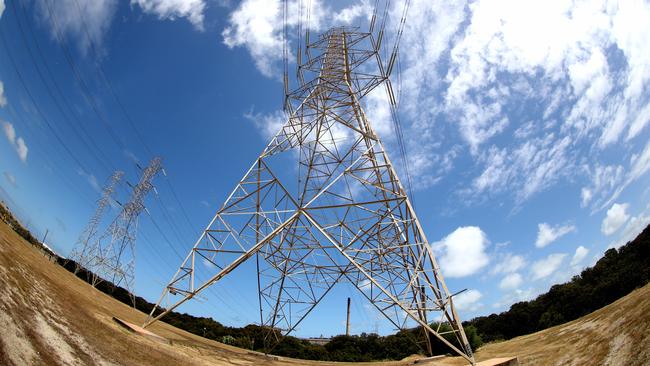
The cracking price earned by Telstra of 28 times earnings before interest, tax, depreciation and amortisation shows the value that pension fund investors place on yield from hard assets in the present market.
The deal put together by infrastructure house Morrison & Co and advised by Barrenjoey delivers the earnings certainty sought by the Future Fund, Commonwealth Super and Sunsuper.
The AGL demerger highlights how investor demand for environmentally sustainable returns is playing a key role in corporate boardrooms.
ESG is not always the dominant factor but it is crucial and the AGL board is to be commended for laying down a framework for sustainable future growth.
The split was with some tweaks, the same as that presented to the board earlier this year by former boss Brett Redman before he was shown the door by then chair Graeme Hunt, who has since taken management control of the old generation assets for a fixed term of three years.
His deputy will be Markus Brokof, who was recruited by Redman, along with former Australia Post executive Christine Corbett and, assuming Brokof eventually gets the top job, both have an enormous challenge to maintain AGL’s market position and grow earnings.
Dismal short-term earnings are a key reason why the stock was sold off on Wednesday, down 9.9 per cent to $8.20 after Hunt said 2021 earnings would be at the low end of estimates and 2022 earnings would be worse.
Neither are actually compelling reasons to buy the story.
Earnings before interest, tax, depreciation and amortisation of $1.7bn in the 2021 financial year will be the lowest since the 2016 financial year and net profit at $540m will be the lowest since 2017.

A split of the assets into coal-fired generation, wind and development opportunities and retail assets will not address the fundamental problem facing the company today, which is weak wholesale electricity prices.
They are due to a combination of weak demand due in part to a mild summer, an influx of solar power and a subdued economy.
Much is written about the miracle bounce in the local economy but that compares with 2019 levels when the economy was crawling.
Josh Frydenberg understands better than most the need for structural reform to open the economy to sustainable long-term growth.
The old AGL will be known as Accel and in the interim will be run by two old economy leaders in chair Peter Botten from Oil Search fame and Hunt, a long-time mining executive.
The name was picked to acknowledge the fact the market change is accelerating and the hope the company can excel at transitioning. This means converting existing coal-fired plants to new energy hubs.
New AGL chair Patricia McKenzie and former Australia Post retail boss Corbett have an equally big task running a retail business sold as a utility selling basic energy and broadband needs to consumers.
Accel will at least initially own 15-20 per cent of the new AGL, which is designed to support its $2bn debt load, which is a hefty one against unknown earnings. But in 2020 the company said EBITDA would be $900m, which makes the ratio of net debt to earnings at a comfortable 2.2 times.
Accel will have $800m in debt and much lower earnings than the $1.5bn reported in 2020, but again the numbers are manageable.
Accel has legacy problems like coal and written down long-dated wind contracts, but its future will be on the assumption the country needs coal-fired power and it can transition to new energy hubs.
Energy contracts between the two will stay the same for the short term, but in the longer term clear AGL will be relying more on renewable power at a time when it no longer controls supply due to the influx of rooftop solar and industrial plants.
That is the new world order, but the board has done the new regime the favour of splitting assets to boost focus.
–
ASX’s new role
In the old days, the ASX was responsible for market integrity rules, but that was when it was an effective monopoly.
The existence of Chi-X meant ASIC had to assume the rule-making power, which explains Wednesday’s circulation of new market integrity procedures.
The aim of the game is simplification, but with that comes potential problems and the real battlefield is actual enforcement.
–
Telstra’s tower power
Telstra’s Andy Penn is proving to be even better at selling the company’s assets as he is at his day job of selling telco services.
Sadly, there is a limit to how many times you sell the asset, but this time, with the Future Fund and Commonwealth Super joining Sunsuper in the driver’s seat, it almost looked like the government was buying back the assets it first sold in 1997.
Not quite, but the 28 times earnings sale of a 49 per cent stake in the mobile towers was a cracking result, more than achieving Penn’s objectives.
These were to increase transparency around the company’s rich asset base, bring a more commercial edge to the way it does business and provide optionality to the company management.
Morrison & Co’s Marko Bogoievski put the consortium together and approached Telstra in March, with the help of Barrenjoey.
The deal ticked all the boxes and, at a time when the market was talking up the imminent sale of Optus’s towers, the behemoth managed to have its deal signed, sealed and delivered.
One ray of hope is that with outside shareholders Telstra might see its way to opening its infrastructure to third parties like TPG to allow it and others to use its towers. So far we have just had talk so it remains to be seen whether Telstra can quite see its way to an open infrastructure transaction that would be a boon to the market.
Penn has a few more assets to be sold, like the fixed-line ducts that will earn $1bn a year for next century from NBN as part of the 2011 NBN compensation package.
This is another prime candidate for sale and, with Penn promising to put the bulk of funds back in shareholders’ hands in some form, there is blue sky back on the horizon. Then it gets back to the day job selling NBN packages and mobile phone contracts.








The boom in corporate activity is driven by three factors, starting with excess liquidity, and two others played out in Telstra’s $2.8bn mobile towers sale and the ESG pressure resulting in a split in the 184-year-old AGL.